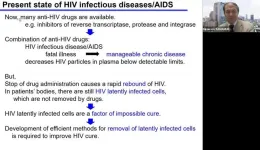(Press-News.org) Ruxolitinib, a drug that is already approved by the U.S. Food and Drug Administration (FDA) for treating certain cancers and skin conditions, is effective at inhibiting CaMKII, a protein kinase linked to cardiac arrhythmias.
In a new study published June 21, 2023, in Science Translational Medicine, researchers from Johns Hopkins University and the University of Chicago invented a new reporting technique to monitor activity of CaMKII while screening the effects of nearly 5,000 FDA approved drugs on human cells that expressed the enzyme. The screen identified five previously unknown CaMKII inhibitors; ruxolitinib, which is used to treat cancers of the blood and bone marrow, along with skin conditions like atopic dermatitis and vitiligo, was the most effective.
CaMKII, or Calcium and calmodulin-dependent protein kinase II, is critical to cardiomyocytes, the muscle cells of the heart, where it maintains the balance of calcium. Activation of CaMKII helps facilitate rapid changes in heart activity, such as initiating a fight-or-flight response in the body. Overactivation can lead to impaired heart function and cell death, which can in turn lead to poor heart health outcomes like arrhythmia.
CaMKII is perhaps best known, however, for its role in the brain, where it is believed to play key roles in learning and memory. This has slowed the development of CaMKII inhibitors to treat arrythmia, for fear they could impact cognitive function.
“Finding an FDA approved drug means that millions of people have been taking CaMKII inhibitors, and in the case of ruxolitinib, there are no reported major problems with the brain,” said Mark Anderson, MD, PhD, a senior author of the paper and Dean of the Biological Sciences Division and Pritzker School of Medicine, Executive Vice President for Medical Affairs, and Paul and Allene Russell Professor at the University of Chicago. “That should give pharma and biotech companies confidence that they could carry out development of a CaMKII inhibitor program, because the biggest obstacle seems to be surmountable.”
The research began in Anderson’s lab at Johns Hopkins University, where he previously served as the William Osler Professor and Director of the Department of Medicine. Oscar Reyes Gaido, the study’s first author and an MD-PhD student in the lab, developed a new tool to measure activity of CaMKII in living cells. He started with a protein called green fluorescent protein (GFP), originally derived from jellyfish, that emits green light. He then engineered the GFP tag to detect CaMKII activation, making a new reporter called CaMKAR (CaMKII Activity Reporter). When this reporter was inserted into human heart cells, it helpfully glowed bright green whenever CaMKII became active, allowing researchers to monitor enzyme activity.
“This biosensor will be very useful for studying how CaMKII activity changes in both healthy and pathological contexts. Existing methods can measure CaMKII activity, but they lack the versatility and resolution to track in real time and with high sensitivity,” Reyes Gaido said. “This has been a real obstacle for studying enzyme biology in general, so this gives the field an important new tool.”
Using this tool, the researchers conducted a drug repurposing screen to test the effects of 4,475 approved compounds on cultured human cardiomyocytes. This identified five previously unknown CaMKII inhibitors: ruxolitinib, baricitinib, silmitasertib, crenolanib, and abemaciclib. Of the five, ruxolitinib was the most effective at inhibiting CaMKII activity in cell and mouse models of CaMKII-driven arrhythmias. A 10-minute application of the drug was enough to prevent catecholaminergic polymorphic ventricular tachycardia (CPVT), a congenital source of pediatric cardiac arrest, and rescue atrial fibrillation, the most common clinical arrhythmia. Crucially, the mice treated with ruxolitinib did not show any adverse cognitive effects when they were tested with memory and learning tasks.
Anderson said that new drugs based on ruxolitinib could be used in several ways to treat heart conditions. One would be what he called the “pill in a pocket” scenario. In the early stages of atrial fibrillation, people could take the medication occasionally as symptoms arise. Patients with CPVT are often resistant to standard treatments, and a ruxolitinib-based treatment could provide another option. Finally, there is evidence that inhibiting CaMKII during a heart attack can prevent heart muscle from dying, so emergency responders could potentially administer such a drug as part of standard practice.
“There's been a long search for fundamental pathways that could be targets for therapeutics in arrhythmias,” Anderson said. “This could be a finding that will translate relatively rapidly into people now since it's already been proven to be safe in humans.”
The study, “An improved reporter identifies ruxolitinib as a potent and cardioprotective CaMKII inhibitor,” was supported by the American Heart Association Predoctoral Fellowship, the National Institutes of Health, the Sarnoff Fellowship, the Translational Research Program at Boston Children’s Hospital, the RWJF/AHA Harold Amos Faculty Development Program Grant, and the Flight Attendant Medical Research Institute. Additional authors include Nikoleta Pavlaki, David Walker, Joshua Mayourian, and Vassilios J. Bezzerides from Boston Children’s Hospital and Harvard Medical School; Jonathan M. Granger, Olurotimi O. Mesubi, Bian Liu, Brian L. Lin, Alan Long, Kate L. Schole, Chantelle E. Terrilion, Lubika J. Nkashama, Kimberly M. Ferrero, Richard L. Huganir, Jun O. Liu, and Elizabeth D. Luczak from Johns Hopkins University; Mohit M. Hulsurkar, Lauren E. Dorn, and Xander H. T. Wehrens from Baylor College of Medicine; and Frank U. Müller from the University of Munster, Germany.
END
Repurposed drug shows promise for treating cardiac arrhythmias
Ruxolitinib, a drug that is already approved by the U.S. Food and Drug Administration (FDA) for treating certain cancers and skin conditions, is effective at inhibiting CaMKII, a protein kinase linked to cardiac arrhythmias
2023-06-21
ELSE PRESS RELEASES FROM THIS DATE:
Urgent action needed to further improve child survival in Ethiopia: Study
2023-06-21
New global research on child mortality rates in Ethiopia shows while there has been a significant decline in these rates in past three decades, too many children under the age of five are still dying.
The analysis found the mortality rate in the under-five demographic decreased by almost 4.5 per cent every year between 1990 and 2019.
However, despite the progress, it’s still one of the highest rates in the world with an estimated 190,000 under 5 deaths in 2019 at the rate of 52 deaths per 1000 livebirths. The country’s neonatal mortality rate is 26.6 deaths per 1000 livebirths.
Lead author Dr Gizachew Tessema from the Curtin School of Population ...
Quantum interference can protect and enhance photoexcitation
2023-06-21
When a photon interacts with a material, an interaction occurs that causes its atoms to change their quantum state (a description of the physical properties of nature at the atomic level). The resulting state is called, aptly, photoexcitation. These photoexcitations are conventionally assumed to kill one another when they come near each other, radically limiting their density and mobility. This in turn limits how efficient tools that rely on photoexcitation such as solar cells and light-emitting devices can be.
But in a study published June 19 in the journal Nature Chemistry, scientists at Northwestern University and Purdue University challenge this assumption ...
Reducing bias and stigma associated with medication-assisted treatment improves care
2023-06-21
Medication-assisted treatment (MAT), such as naltrexone, is a well-documented successful treatment for opioid use disorder (OUD). However, there are multiple barriers for clinicians to use MAT, including clinician lack of confidence in using the treatment, their own misconceptions about the patient population, and, until recently, federally required training. Additionally, there is a stigma associated with MAT and the patients who would most benefit from it. Improving access to MAT training and integrating it into clinician programs and curriculums may remove identified barriers, decrease stigma, and enable newly trained clinicians to treat patients.
To address these barriers, ...
UNM researchers find medical cannabis patients who feel 'high' report greater symptom relief but increased negative side effects
2023-06-21
In a new study titled, “Understanding Feeling ‘High’ and Its Role in Medical Cannabis Patient Outcomes,” published in the journal, Frontiers in Pharmacology, researchers at The University of New Mexico, in collaboration with Releaf App™ found that patients who reported feeling “High” experienced 7.7% greater symptom relief and an increase in reporting of positive side effects such as “Relaxed” and “Peaceful.” However, these benefits must be weighed against a more than 20% increase in negative side effect reporting.
Senior author and Associate Professor of Psychology, ...
Screening newborns for "bubble-baby" disease saves lives
2023-06-21
Screening newborns for severe combined immunodeficiency disease (SCID) significantly increases the survival of children after bone marrow transplantation, a new North American study finds.
Published today in The Lancet with an accompanying editorial, the retrospective study was co-led by Elie Haddad, an Université de Montréal medical professor and clinician scientist, pediatrician and immunologist at the UdeM-affiliated CHU Sainte-Justine mother-and-child hospital.
The research shows that the gradual adoption of newborn screening for SCID since 2008 in North America has boosted the survival rate from 73 per cent between 1982 and 2009 to ...
Rain gardens could save salmon from toxic tire chemicals
2023-06-21
Specially designed gardens could reduce the amount of a toxic chemical associated with tires entering our waterways by more than 90 per cent, new research shows.
Tired toxins
The chemical 6PPD-quinone can form when car tires interact with the atmosphere. It enters rivers and streams when rain runs off roads into waterways. It is toxic to coho salmon, rainbow trout and some other fish.
“Rain gardens”, or bioretention cells, are gardens engineered to reduce flooding and soak up contaminants when road runoff is directed ...
New MU study examines variability of water, carbon in Missouri agriculture ecosystems and future impact on crops
2023-06-21
One of the main reasons plants use water is to allow them to absorb carbon dioxide from the atmosphere. This means that, in plants, the water and carbon cycles are tightly linked. In a new study, researchers from the University of Missouri and the United States Department of Agriculture (USDA) used this foundational principle to identify sustainable farming practices aimed at helping staple crops like corn and soybeans thrive during extreme weather conditions that have become more common in the Midwest.
This study examined how farming practices affect crop resilience to climate change by examining water and carbon ...
Welcoming two new journals to the PLOS portfolio: PLOS Mental Health and PLOS Complex Systems
2023-06-21
SAN FRANCISCO — PLOS today is announcing that it will soon launch two new journals: PLOS Mental Health and PLOS Complex Systems. PLOS sees these new journals as an opportunity to give evolving research communities opportunities to forge a new path for research in the field. Whether that means welcoming new ways of sharing research transparently or cementing new policies that enable research to be evaluated and rewarded more fairly, or simply finding a broader audience where research can make a greater real-world impact.
PLOS Mental Health provides a dedicated venue for all mental health research, connecting global experts from a broad range of disciplines and addressing challenges ...
A new, promising weapon in the fight against HIV
2023-06-21
A research team led by Tokyo Medical and Dental University (TMDU) has identified a molecular compound that activates latent HIV-1 in cells, showing promise for HIV treatments
Tokyo, Japan – A multi-institutional research group led by researchers from Tokyo Medical and Dental University (TMDU) has made a significant and promising step forward in our ability to treat human immunodeficiency virus type 1 (HIV-1), the virus underlying acquired immunodeficiency syndrome (AIDS).
To appreciate their accomplishment, we must first know a little about why HIV-1 is difficult to eliminate. ...
A roadmap for gene regulation in plants
2023-06-21
– By Will Ferguson
For the first time, researchers at the Department of Energy’s Lawrence Berkeley National Laboratory (Berkeley Lab) have developed a genome-scale way to map the regulatory role of transcription factors, proteins that play a key role in gene expression and determining a plant’s physiological traits. Their work reveals unprecedented insights into gene regulatory networks and identifies a new library of DNA parts that can be used to optimize genetic engineering efforts in plants.
“Transcription factors regulate things like how plants grow, how much fruit they produce, ...
LAST 30 PRESS RELEASES:
Chicago health information leader recognized for raising CPR readiness and blood pressure awareness
The Intimate Animal, a new book from Kinsey Institute Executive Director Dr. Justin Garcia
When blue-collar workers lose union protection, they try self-employment
New video dataset to advance AI for health care
MEA-based graph deviation network for early autism syndrome signatures in human forebrain organoids
New modeling approach sheds light on rare gut disease
Study documents potentially hazardous flame retardants in firefighter gear
Can certain bacteria regulate aging of the immune system and its related alterations?
AI model helps diagnose often undetected heart disease from simple EKG
There are fewer online trolls than people think
Cell membrane fluctuations produce electricity
Jeonbuk National University study shows positive parenting can protect adolescents against self-harm
Surface-engineered ZnO nanocrystals to tackle perfluoroalkyl substance contamination
This new understanding of T cell receptors may improve cancer immunotherapies
A new fossil face sheds light on early migrations of ancient human ancestor
A new immunotherapy approach could work for many types of cancer
A new way to diagnose deadly lung infections and save lives
40 percent of MRI signals do not correspond to actual brain activity
How brain-inspired algorithms could drive down AI energy costs
Gum disease may be linked to plaque buildup in arteries, higher risk of major CVD events
Contrails are a major driver of aviation’s climate impact
Structure of dopamine-releasing neurons relates to the type of circuits they form for smell-processing
Reducing social isolation protects the brain in later life
Keeping the heart healthy increases longevity even after cancer
Young adults commonly mix cannabis with nicotine and tobacco
Comprehensive review illuminates tau protein's dual nature in brain health, disease, and emerging psychiatric connections
Book prepares K-12 leaders for the next public health crisis
Storms in the Southern Ocean mitigates global warming
Seals on the move: Research reveals key data for offshore development and international ecology
Sports injuries sustained during your period might be more severe
[Press-News.org] Repurposed drug shows promise for treating cardiac arrhythmiasRuxolitinib, a drug that is already approved by the U.S. Food and Drug Administration (FDA) for treating certain cancers and skin conditions, is effective at inhibiting CaMKII, a protein kinase linked to cardiac arrhythmias


